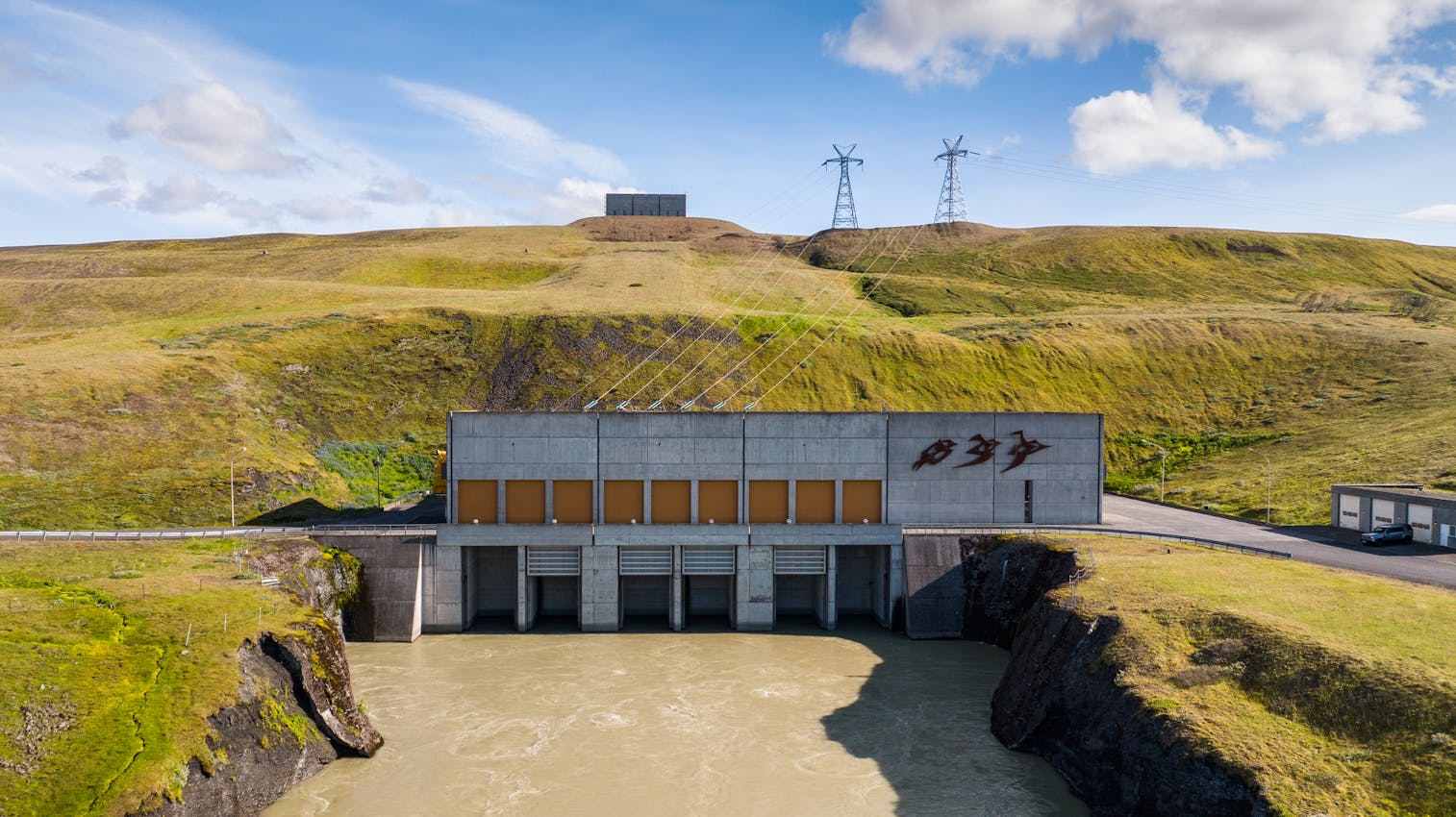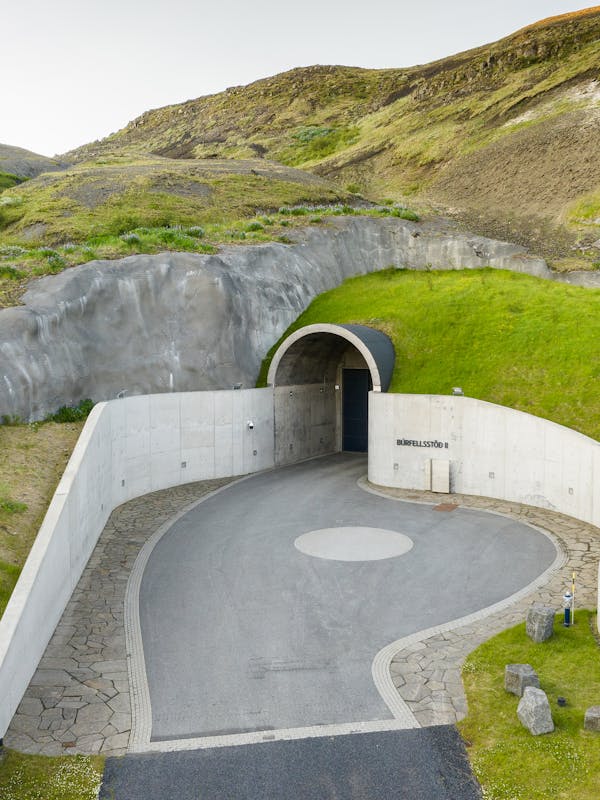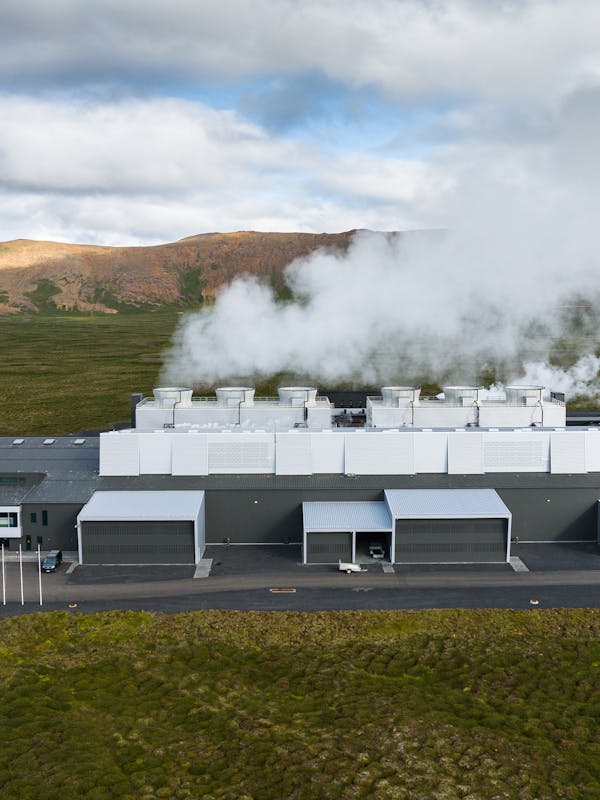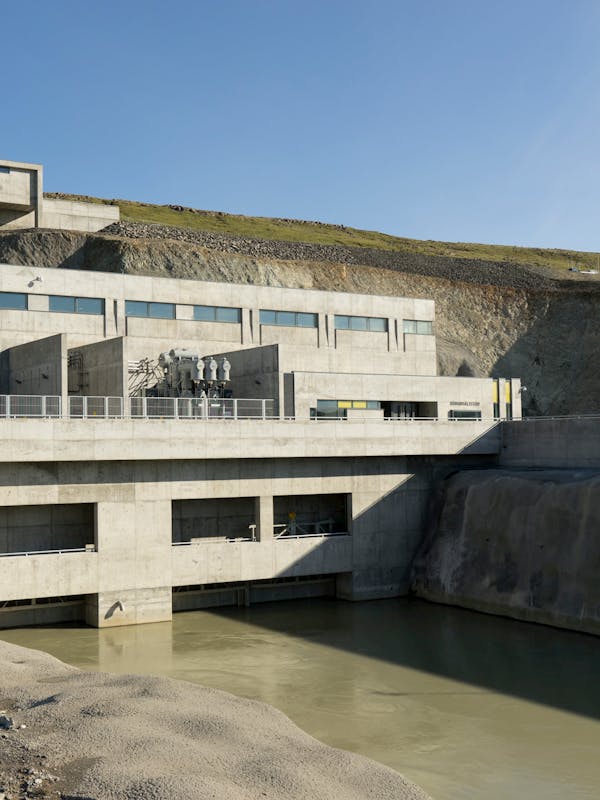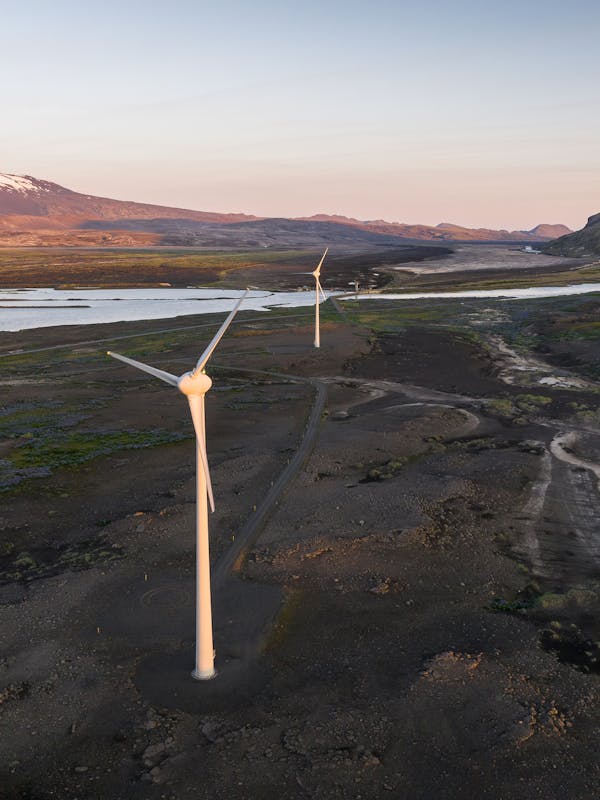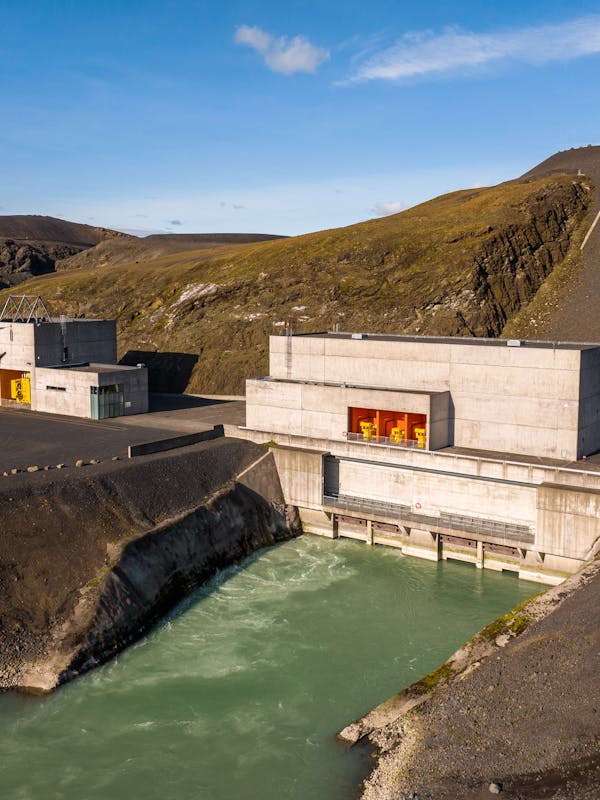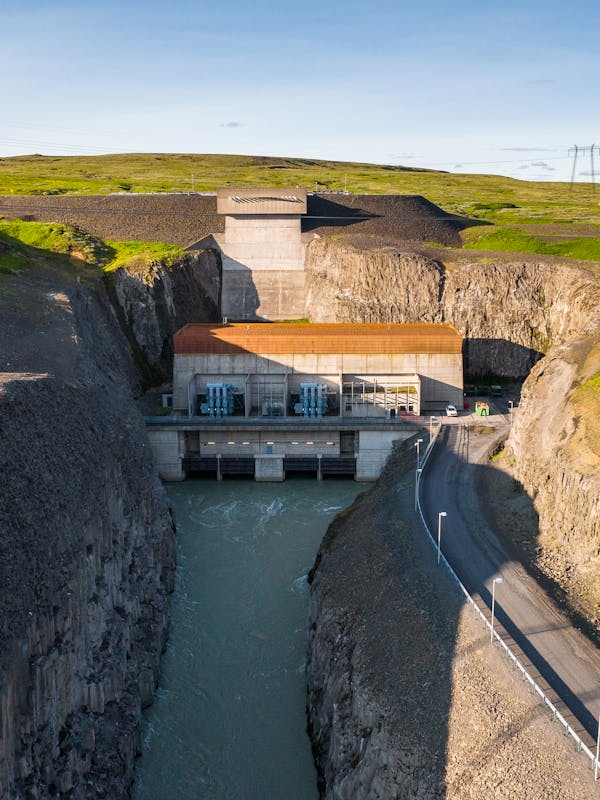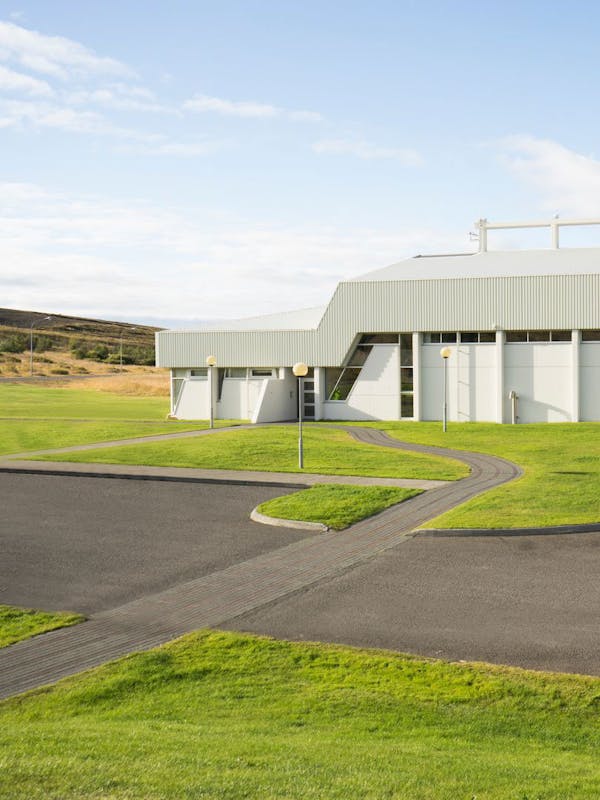Third largest power station in the country

The Hrauneyjafoss Station is Iceland’s third largest power plant, producing 210 MW. It is located near the Sprengisandur Route on the edge of the highlands; southwest of the Sigalda Station, and utilises the same water as Sigalda Station. Hrauneyjafoss Station came on-line in 1981.
The Tungnaá River is dammed on rather flat land approximately 1.5 km above the Hrauneyjafoss Waterfall and 7 km below the Sigalda Station. The difference in altitude is approximately 15 m. Hrauneyjalón, an 8.8 km² reservoir, was formed by the dam. A low soil wall dam stretches along the lava flatlands on the south bank of the river. A headrace channel runs 1 km northwards from the reservoir through a dip in the Fossalda Hill to an intake point at its northern edge. Three steel penstocks (4.8 m in diameter) run 272 m down the hill to the powerhouse. The tailrace canal, just over one kilometre in length, enters the Spordöldukvísl waterway, which runs into the Tungnaá River.
